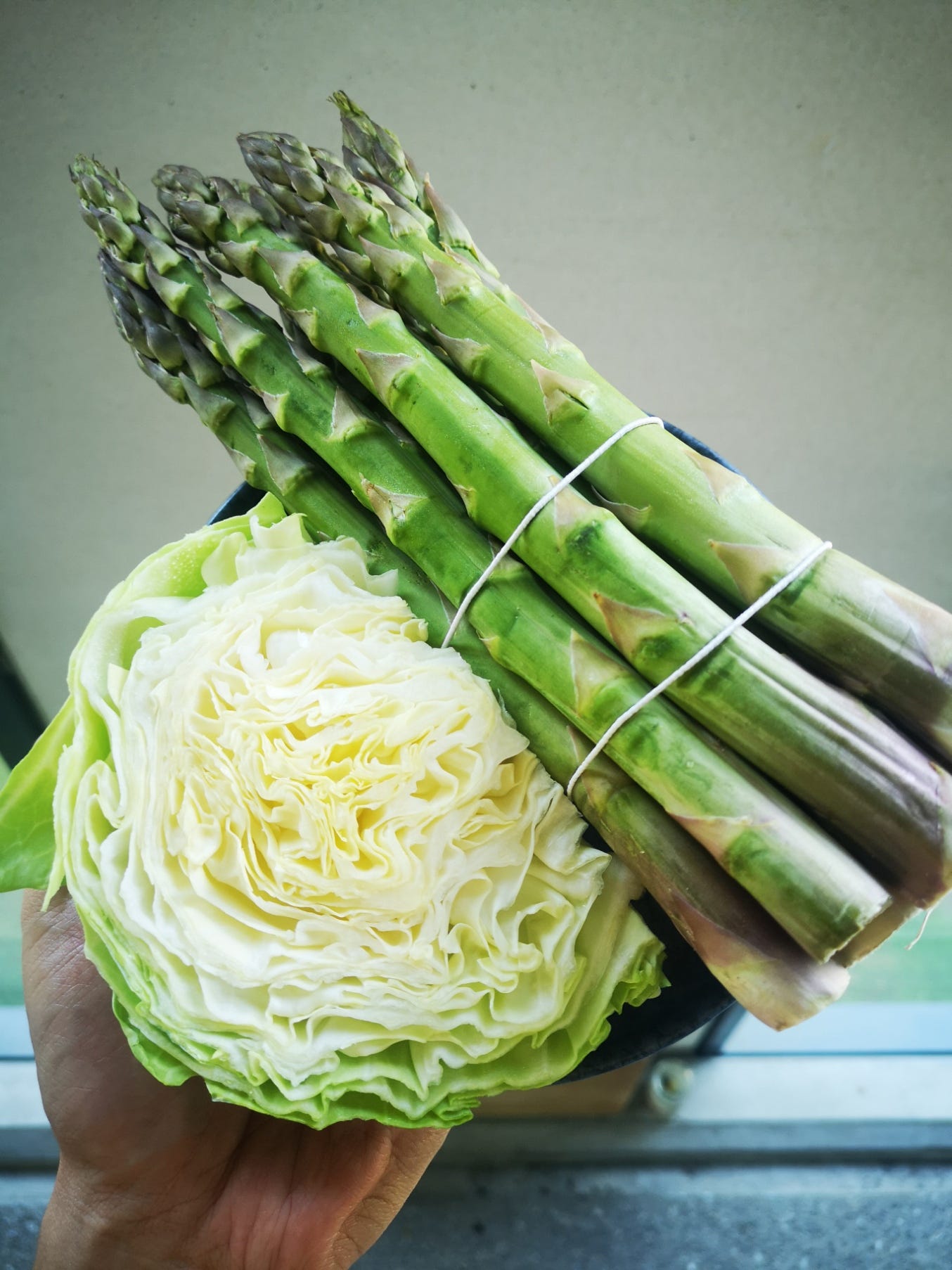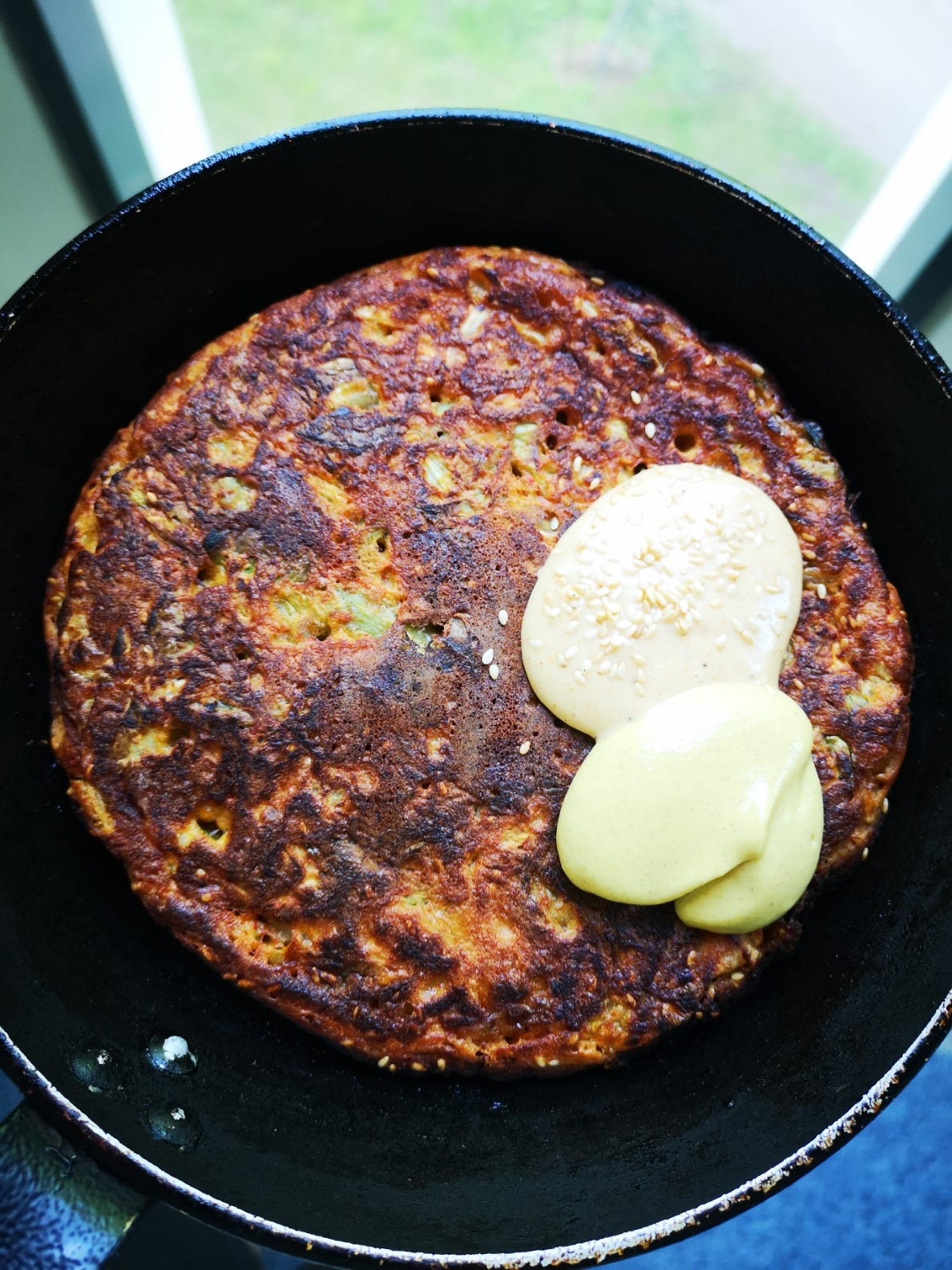hoarding Summer Vegetables and keeping a healthy gut
The sheer variety of produce this season is begging to be consumed, if not, then at least preserved.
With temperatures going as high as 30C, the long awaited summer has finally arrived. Along with its heat, nature appears to be breathing out as it ripens all the fruits and vegetables that are imploring to be enjoyed.
As I stroll the produce section of the market, I was greeted by several types of onions, young garlic bulbs, fennel, green and even white asparagus, Finnish summer cabbages (those tender layers I would eat simply grilled with some salt), cucumbers, zucchini and on and on…
A bit overwhelmed with so much variety, I then settled for four items (for now): the plump green asparagus, two kinds of young allium bulbs and that tender summer cabbage.
Since one can only eat much, it seems fitting that I don’t miss this peak of ingredients by making some sort of preserve out of it so it could be enjoyed anytime (or as long as I have it).
So I went for an overnight kimchi-style vegetable ensemble.
A quick sort of marinated vegetable salad that keeps well in the fridge. always ready to be eaten with anything. Toasts, eggs, over rice, grilled meat (and even seafood), even by itself. It’s just a good sweet-spicy-crisp-fresh mixture of all those summer bounty.
Contrary to the somewhat long fermentation process given to more traditional styles of kimchi, this one (with my impatience) got consumed after overnight of hanging out in the fridge. Which is still good, I must say.
It all starts with adding a bit of salt to all the chopped veggies to let it give off some of the water it contains, which also happens to affect the overall crunchiness of the product.
For a small batch such as this, I let my veggies hang out for about 15 minutes.
That would be the perfect time to make the rice paste which would be the ‘seasoning medium’ for the kimchi. Also, as the kimchi sits longer in storage, this paste gets diluted with the vegetables’ own water content, thereby producing that kimchi essence which could be used for many stuff as well.
So here’s the basic ratio I use for the rice paste seasoning:
20g glutinous rice flour
100ml water
Just 2 ingredients. Really. So for ratio aficionados, that’s 1 part of your glutinous rice flour to 5 parts of water.
Simply combine in a pot, mixing until its clear of lumps. Set to medium heat while stirring . By the time it reaches boiling point, the starch would have started to gelatinize turning your whole mixture into a gloppy paste. That’s what you want. :) Off the heat, continue mixing to help it cool down. Because only after it has cooled down, then the other ingredients maybe added.
Those other ingredients are totally up to you. But the sort of classic additions are garlic, ginger, spring onion and the bright red chili pepper flakes which are not all created equal. So for this project, I happily obliged to use the Korean chili flakes Gochugaru. Those tiny flakes-specks of crimson red which are surprisingly not hot, but rather pleasantly warm to the tongue with its nice almost fruity aroma.
After making up my mind on how I want my kimchi to taste like, I settled for the pretty basic one so I’d still get to taste the star vegetables I’m putting in.
Here’s the recipe:
500g mixed vegetables (asparagus, cabbage), pre-salted
rice paste base (the whole quantity above)
100g white onion, sliced
35g spring onion, sliced
20g garlic, chopped
20g ginger, chopped
20g Korean chili flakes
20ml fish sauce
15ml white vinegar
10g sugar
3g salt
I find it quite easier to mix all the ingredients (except for the mixed vegetables) with the rice paste so I could check for seasoning if needed. This is a pretty flexible recipe that can be adjusted based on preference. So one can always experiment. :)
Then just simply combine the seasoned rice paste (adjusting to your preference as you proceed) to the cut and pre-salted vegetable mix.
It can be eaten directly but it will benefit by mingling inside your fridge for a couple of nights. This raw combination of ingredients, along with the rice paste acting as the diet of the good bacteria transforms this ensemble to a culture-rich powerhouse that can benefit our guts (as multiple studies suggest). Plus, it tastes good!
That time hanging out and fermenting, transforms this good tasting vegetable salad into this rock star condiment that’s crispy, sweet, tangy and funky.
Any leftover gets to transform yet another time in one of my favorite food of all time.
Vegetable pancake.
Here’s the recipe
150g leftover kimchi
1 medium egg
20g all purpose flour
20g cornstarch
salt and pepper to taste.
simply combine everything in a bowl, mixing well and making sure there aren’t any lumps.
cook in a sufficiently oiled sauté pan for about 4 minutes per side (this will depend on the size of the pan and how thin the mixture was spread)
enjoy. :)
Well, that’s it for this week.
I hope you get to explore produce this season and make your own kimchi.
:)
until next week!








